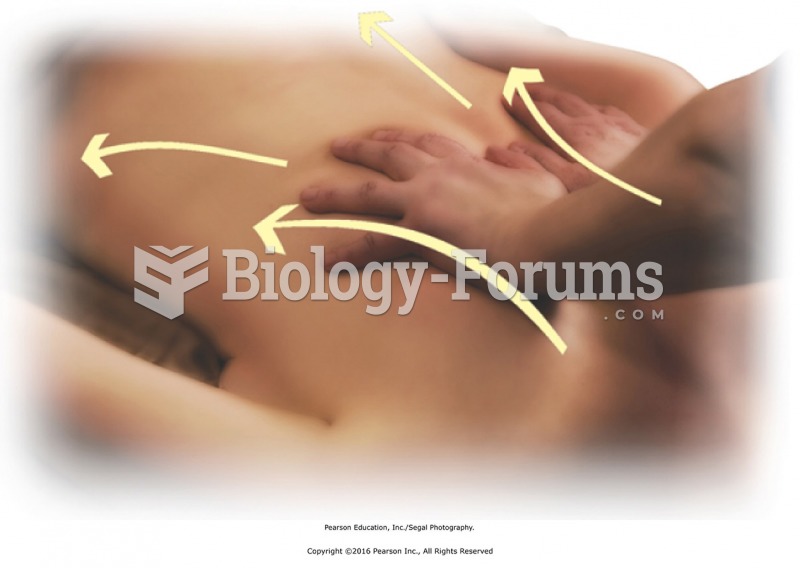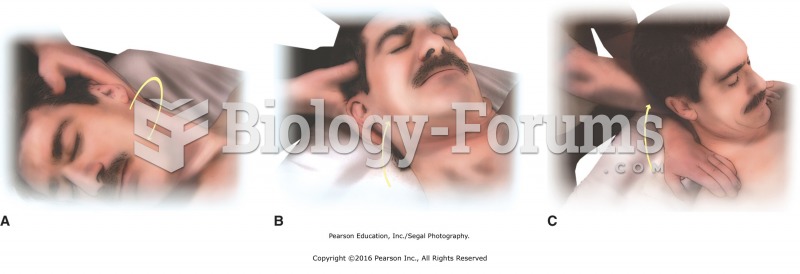|
|
|
More than 150,000 Americans killed by cardiovascular disease are younger than the age of 65 years.
The average older adult in the United States takes five prescription drugs per day. Half of these drugs contain a sedative. Alcohol should therefore be avoided by most senior citizens because of the dangerous interactions between alcohol and sedatives.
Immunoglobulin injections may give short-term protection against, or reduce severity of certain diseases. They help people who have an inherited problem making their own antibodies, or those who are having certain types of cancer treatments.
Patients should never assume they are being given the appropriate drugs. They should make sure they know which drugs are being prescribed, and always double-check that the drugs received match the prescription.
Fewer than 10% of babies are born on their exact due dates, 50% are born within 1 week of the due date, and 90% are born within 2 weeks of the date.
 Loosen the scalp by applying circular friction to the sides, back, and top of head (over entire hair ...
Loosen the scalp by applying circular friction to the sides, back, and top of head (over entire hair ...
 Cradle the head to finish. Rest the head on the table. Place your fingers on the sides of the head ...
Cradle the head to finish. Rest the head on the table. Place your fingers on the sides of the head ...
 Finish with bilateral stroking to the entire back. Stand at head of the table with fingers pointing ...
Finish with bilateral stroking to the entire back. Stand at head of the table with fingers pointing ...




